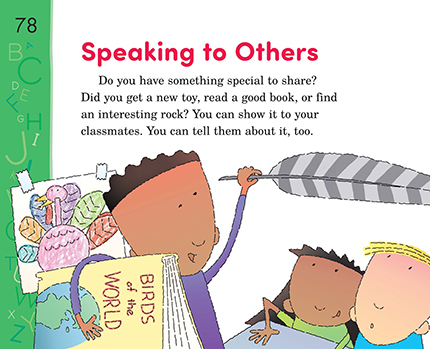Page 78 from

Start-Up Activity
Demonstrate giving a speech in exaggerated ways. For example, you could speak too softly. Another time, you could stare at your feet and/or partially hide what you are showing. Ask students what you did wrong. Then read pages 78–79, paying careful attention to the tips on page 79.
Enrichment Activity: Display the “Show-and-Share Tips” (page 79) in the classroom. Schedule show-and-share time for birthdays, special occasions, important projects, and holidays.
Think About It
“Talking with my classmates is easier than speaking to them.”

Start-Up Activity
Demonstrate giving a speech in exaggerated ways. For example, you could speak too softly. Another time, you could stare at your feet and/or partially hide what you are showing. Ask students what you did wrong. Then read pages 78–79, paying careful attention to the tips on page 79.
Enrichment Activity: Display the “Show-and-Share Tips” (page 79) in the classroom. Schedule show-and-share time for birthdays, special occasions, important projects, and holidays.
Think About It
“Talking with my classmates is easier than speaking to them.”